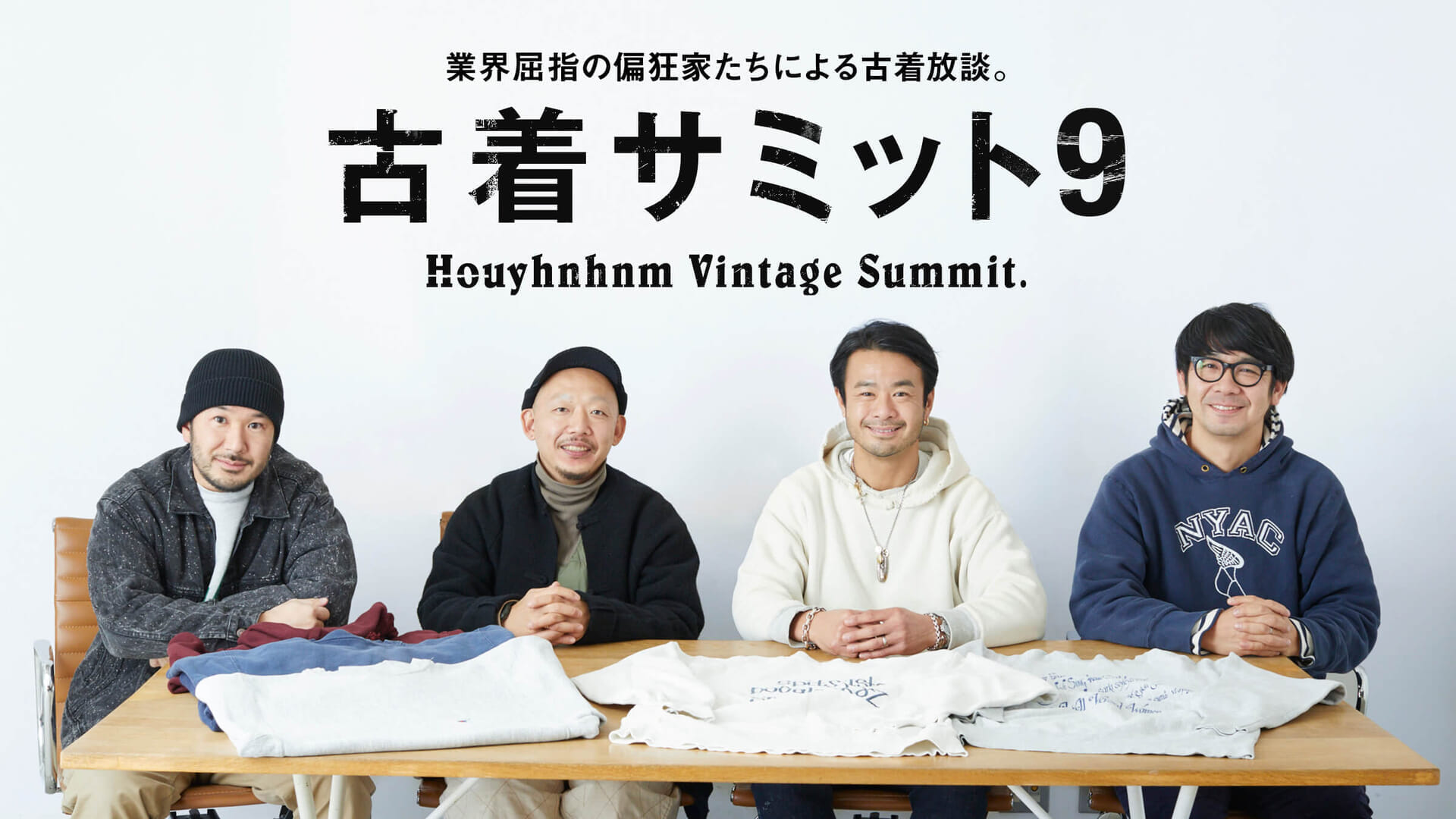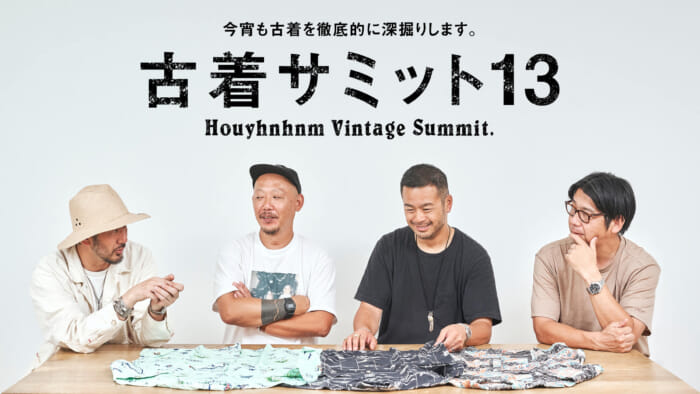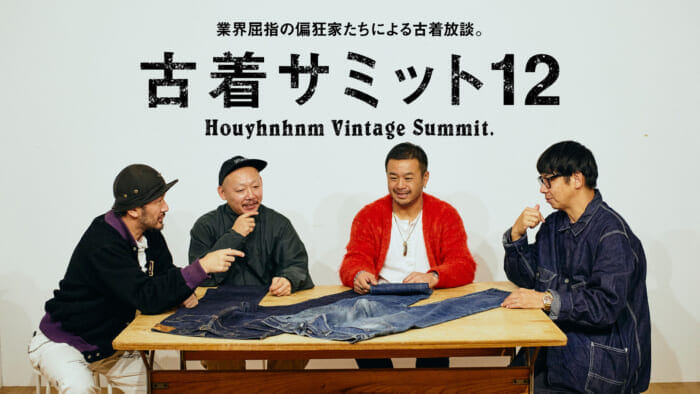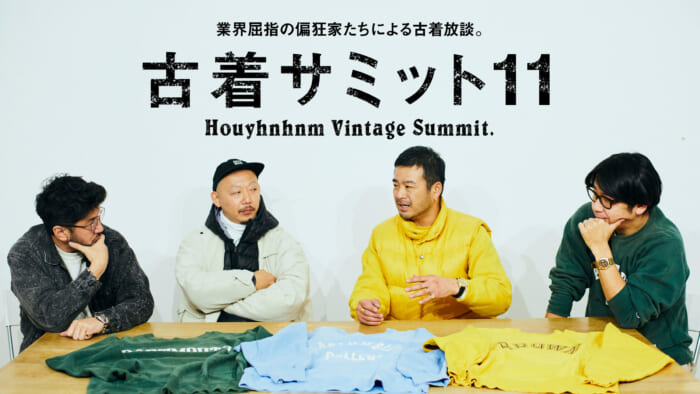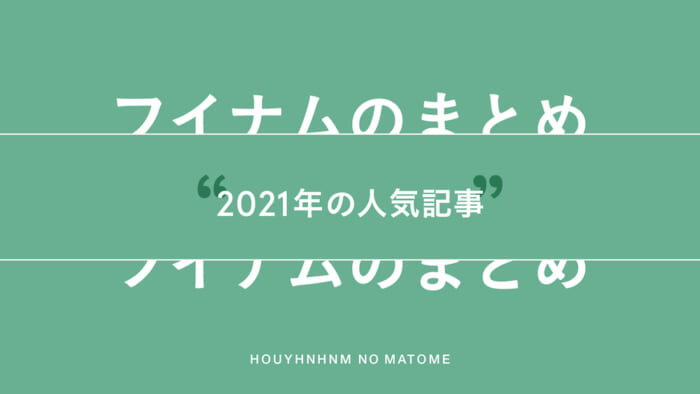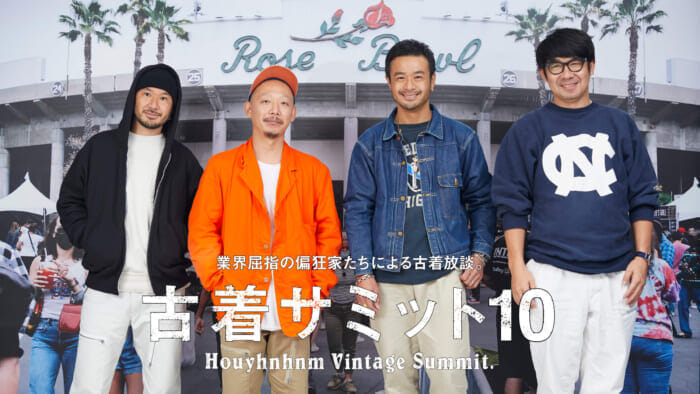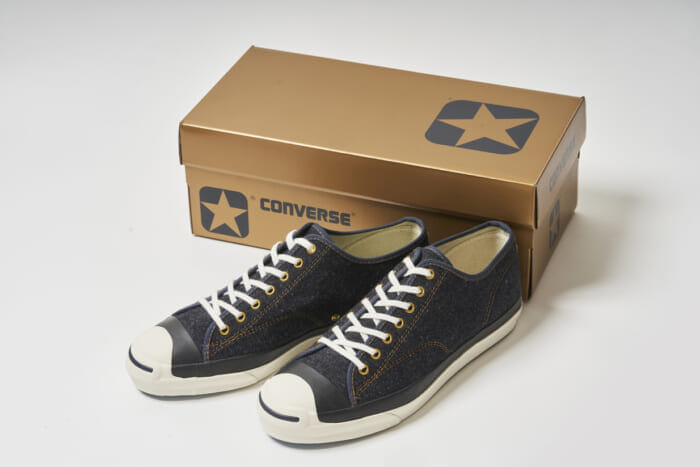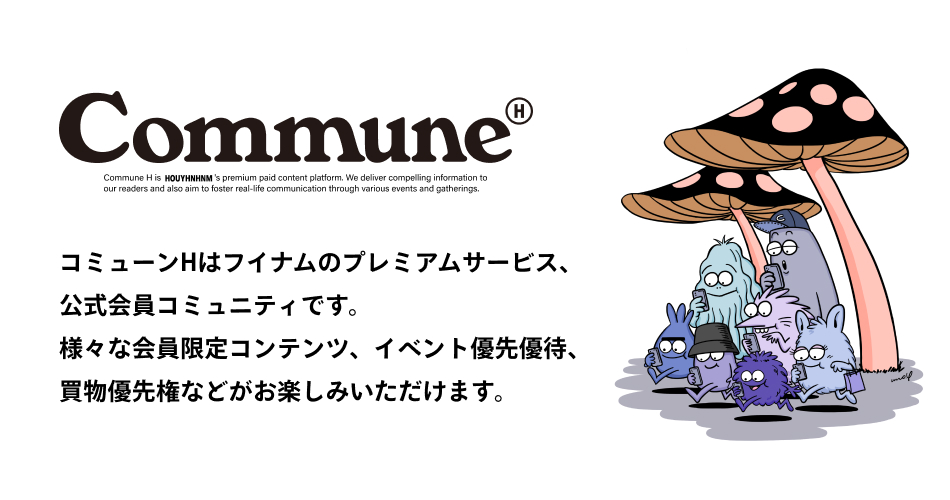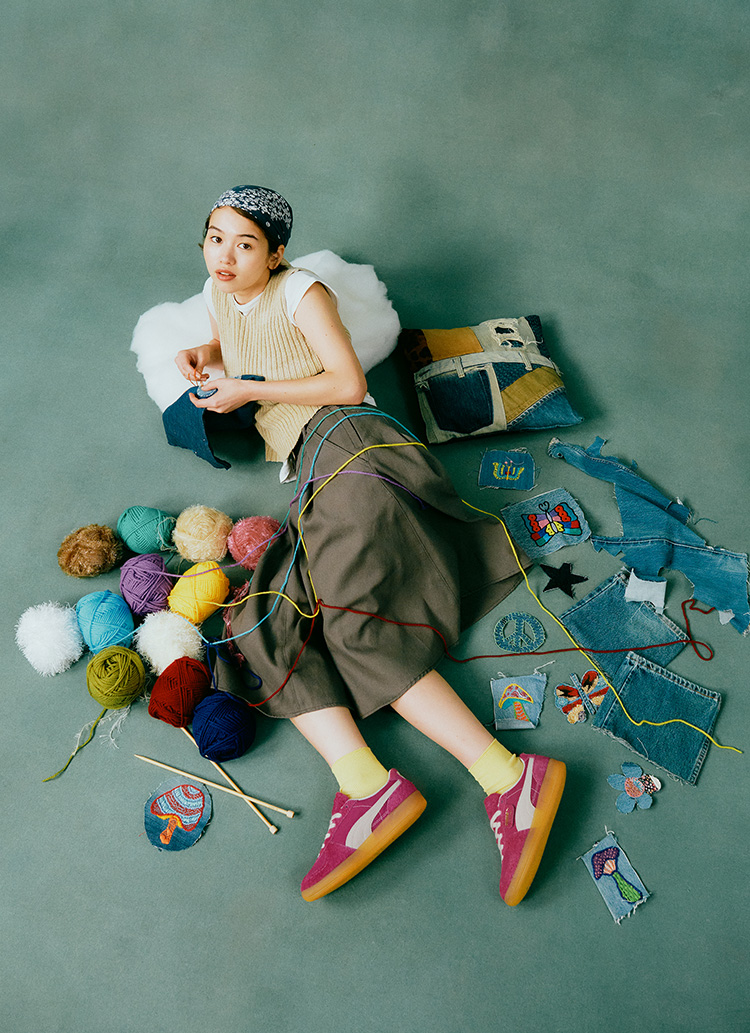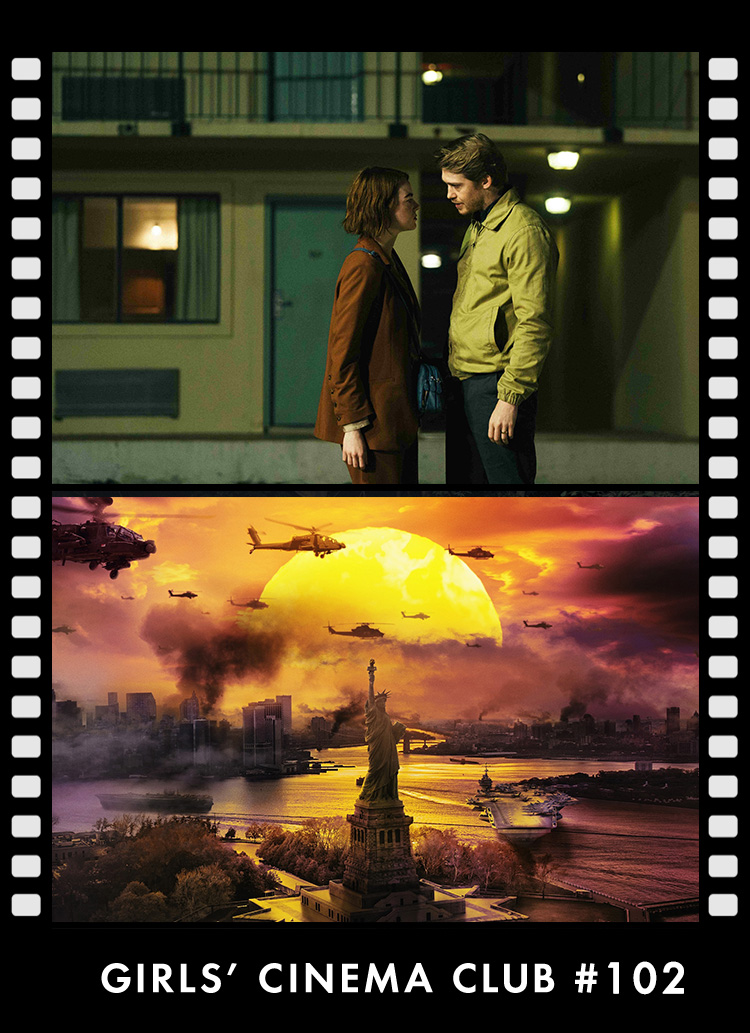Third lecture
Fujihara Yutaka

'80s L.L.BEAN ALPAKA PARKA, '70s L.L.BEAN MOUNTAIN PARKA WITH LINNER
Fujiwara: The first is an L.L. Bean hoodie jacket. The brushed alpaca blend parka is from the 80s, and the hardshell one is probably from the 70s, judging from the written tag. Both are models I have been looking for for many years, and I finally got them recently.

Konno: Alpaca blends would be quite expensive nowadays.
Fujiwara: Yes, that's right. I've been looking for this "L.L. Bean" hoodie as well, though I'm ultimately attracted to the "Kodiak" fleece line, which was released in the 1950s as a part of the "Campus" line.
Abe: The mampa type over here is a model you don't see very often.
Kurihara: I have never seen it either.
Fujiwara: I had actually seen only the gusset of this jacket a long time ago, but I was only looking for a complete jacket with both the hood and the cotton lining.


Kurihara: There is also a tag of a Canadian brand called "John's Tents & Awnings," which is the manufacturer. L.L. Bean often outsources its products.
Abe: It seems that Patagonia used to manufacture fleece at one time, so it is possible that this is the case.
Fujiwara: Speaking of beige, I have a strong impression of Mr. Abe.
Abe: Yeah?
Fujiwara: Yes, I have been wearing indigo for a few years now. Personally, I supervised a G-jun book ("Levi's VINTAGE DENIM JACKETS Type l/Type ll/Typel lll"), and perhaps because I have been wearing only indigo for the past few years, I have recently become strangely interested in beige. It also has a slightly mature feel to it.

Abe: How is L.L. Bean vintage these days?
Kurihara: As for tote bags, they continue to soar in price year after year, and apparel seems to be pulling slightly from that momentum.
Fujiwara: In particular, I believe that the prices of items from the era of written tags are gradually rising. Although it is a major brand, it does not have many signature items when it comes to apparel. I try to check out unusual or unseen wear as much as possible.
I have a tendency to prioritize compatibility with blue denim."

'70s SIERRA DESIGNS SOUTIEN COLLAR COAT
Fujiwara: The second is a stainless-steel collar coat from Sierra Designs.
Konno: This is just like Abe's impression (laughs).

Fujiwara: It's a city raincoat, isn't it? It has the feel of a Patagonia city raincoat. The item itself is rare, but like the L.L. Bean coat I mentioned earlier, the fact that it came out complete, with the removable down lining still in place, is most amazing.
Kurihara: Indeed. I didn't even know there was such a model to begin with. The tag says 70s, right?

Fujiwara: Yes, it is. I can easily identify 7 trees on the tag as 70s and 8 trees as 80s.
Abe: And didn't the early tags say "BERKELEY, CALIFORNIA" and change to "OAKLAND, CA, U.S.A." starting in the 1970s?
Kurihara: That's right. In addition, the brand name is engraved on the buttons, which is a characteristic detail of the 80s.

Abe: That's right. I'm guessing from the tag that says "Krieger & Sons" on this one that it's a special order from the store?
Kurihara: What do you think? I don't think outdoor brands at that time did special orders. I think it's probably just a dealer's tag, just like Abercrombie & Fitch. However, in a good sense, it is a nice design that makes you think it is a recent special-order model.
Konno: It certainly seems likely.
Fujiwara: Like you, I love Patagonia's city raincoats, and I have an XS size, but it is about the same size as the medium size of this Sierra Designs coat, and it feels somewhat similar to the one I have.

Abe: I see. Is the outer fabric 60/40 cloth?
Fujiwara: It's not 60/40. It is not cotton-nylon to begin with, but cotton-polyester.
Abe: Wow. I'd like to have one in my size, too.
Fujiwara: There are stainless steel collars in the current lineup, but I had never seen one with a chinstrap and Velcro adjuster, and the fact that it was my favorite beige color was one of the deciding factors. I've always given top priority to matching them with blue denim.
We decided to differentiate ourselves from the competition and landed on cracked prints and unique fonts."

'70s & '80s CHAMPION REVERSE WEAVE CREW NECK
Fujiwara: The third one is from "Rare Pion," which, like Konno-san, I also like. These are prints with unusual fonts. Basically, I prefer tricot tags (tricolor tags) from the 80s onward to those from the so-called "single-color tag" era, but the white ones are from the 80s with printed tricot tags, and the gray wooden ones are from the 90s.
Abe: Why do you like the Tricotag era?
Fujiwara: The texture of the sweatshirt fabric is something different. And monochromatic (tags with single-color prints, such as red or blue) are simply too expensive (laughs).
Abe: Well, it sure is expensive.

Konno: This white one has inside seams for ribs and other sewn parts, but after 90s, they are sewn across like the gray wooden one.
Kurihara: The inside stitching is a specification that can be found in some 90s reverse weaves. However, the latter is definitely better for comfort alone.
Abe: But isn't the monochromatic tag era (70s) the latter in reverse?
Konno: Come to think of it, yes. Perhaps when sewing large quantities, they might have used a lock sewing machine with internal stitching to save time and effort.
Kurihara: With vintage sweatshirts, for some reason, many of them have internal stitching on some items, such as black bodies and snow patterns.
Konno: Oh, sure. Maybe there's a reason for that.


Abe: Did you simply choose these two pieces in print?
Fujiwara: Yes, we do. There was a time when I only collected seepage prints, but with the vintage reverse weave becoming more and more popular, I decided to try to differentiate myself from the rest and ended up with cracked prints and unique fonts.
Konno: How many tiers is this? (Vintage reverse weaves tend to be more prized the more rows and tiers in the print)
All: (Laughter)
Kurihara: There are eight steps (laughs).

Abe: The expression "cracked print" is a complete reversal of the original idea (laughs). Cracks used to be something to be shunned, but now they are recognized as a taste.
Fujiwara: I was told by Mr. Konno that it is difficult to reproduce that cracked look with today's printing technology.

Konno: That's right. Whether it is cracks or stains, the quality of ink is too good today, and it is difficult to create the exquisite texture like it was back then. Furthermore, as the garment is worn, it begins to show through as if it is picking up the color of the fabric. That texture is what makes a new item like mine so irresistible.
Fujiwara: Well, I never expected reverse weaving to break out again to this extent.
Abe: It's really amazing how overheated it is.
Fujiwara: This is the biggest boom we have ever seen. Of course, there have been many big waves, but we never expected it to be this big.
I thought the coveralls would come this year."

'40s THOMPSON.CAP RAIL ROAD JACKET
Fujiwara: The fourth is a rail road jacket from a minor brand called "Thompson Cap," probably from the 1940s.
Konno: The fabric is very taut, but did you get it from dead stock?
Fujiwara: Yes, I have a new one. It was dusty when I found it, so I ran water through it once.
Konno: I was also looking for double-breasted coveralls, but I couldn't find any in the right size. These are a good size, and the transition is interesting.


Fujiwara: The collar is black corduroy, the cuffs are denim, and the body is hickory with snap buttons.
Abe: Did you know this "Thompson Cap" brand?

Kurihara: I've seen the denim one without the switch in the front. This jacket has a patch of "New York, New Haven and Hartford Railroad Co." (one of the first class railroads that operated between Boston and New York from 1872 to 1968). It is possible that it was a uniform brand, though, since some of them have a patch of a different railroad company on the exact same body as I have searched.
Konno: I see. Is it mostly railroad company related?
Fujiwara: I think so. Also, for some reason, cord collars are common for double-breasted items, aren't they?
Kurihara: That's certainly a lot.

Fujiwara: For the past few years, I have been pushing only G-jeans, but Abe and others in this project have been saying that "this is the year coveralls will come," and I think this is the year they will come once again (laughs).
Abe: You have a lot of them, don't you, Konno?
Konno: There used to be some, but there are only a few left now. However, there are still some large-sized pieces available, and if you want to wear something a little oversized, you may be able to fit in with the current sense of the times.


